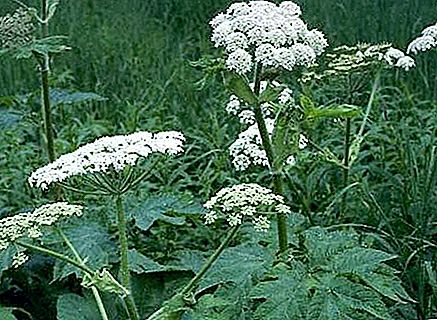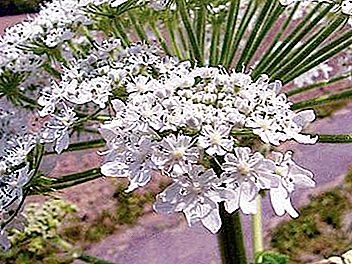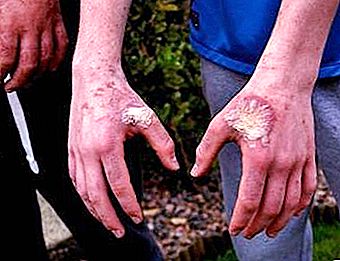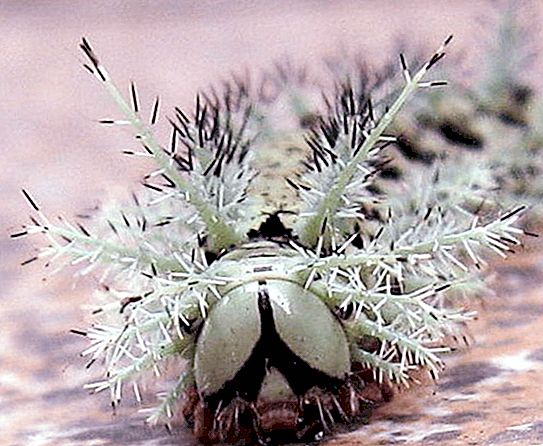Hogweed is a poisonous plant belonging to the family Umbrella, genus Heraclium (Heracleum). It belongs to respiratory allergens, a specific smell (resembling kerosene) can be felt from a distance of about 5 m. In total, about 70 species are known, but only 15 can be found in Russia.

The plant received the name “hogweed” because earlier its foliage was used in the preparation of borsch instead of cabbage. Other names have also taken root: “Hercules grass” - for enormous growth, “bear paw” - for the size and similarity of the shape of the leaves to the limf of the clubfoot.
Hogweed is a biennial or perennial plant, depending on the species. Its height can vary from 20 cm to 4 m. The stems are hollow with a slight pubescence. The leaves are triple or double, collected in a basal rosette, can reach a length of 2 m (in some species up to 3.5 m). The flowers are nondescript greenish-white, collected in umbrella inflorescences with a diameter of 40 cm (in some species - more than 1.2 m). The fruit is a double seed (ovule). Seeds ripen until September, easily crumble. Beautiful honey plant - hogweed plant. The photo shows him well.
Many people know that contact with this plant causes skin damage similar to burns. However, this applies only to one species, namely, Sosnowski hogweed, which is a malicious weed, an aggressor. Defeat

skin arises from the ingress of plant juice and under the influence of sunlight, because it contains furocoumarins. Such contacts are especially dangerous for children, even cases with a fatal outcome are known.
Another species, the Siberian hogweed, is a useful plant used in cooking and traditional medicine. It contains very little coumarins, but there are no furocoumarins, which have a sensitizing effect. From its roots make decoctions used in skin diseases that relieve itching and irritation. A poultice of leaves helps with rheumatic pains.
In the last century in the USSR they tried to use cow parsnip for feeding livestock. The plant was even cultivated, i.e., new varieties with a reduced content of coumarins were bred. It was attracted by a huge green mass containing proteins, sugars, vitamins and minerals, which grew almost without care, propagated by self-sowing. But with the collapse of the country, all work was stopped.

However, hogweed is an aggressive plant, seeds on it are formed of different quality, that is, part of them germinates in the first year, others ripen in the ground for several years. Moreover, they contain essential oil substances. Remaining on the surface of the earth, the shell of the seed rots, and these substances remain on the surface of the soil and inhibit the development of seeds of other plants, that is, provide their “brethren” with the best conditions for germination, removing competitors. Considering that up to 20 thousand seeds that can be easily carried by the wind (and under favorable conditions - all 70, 000) can ripen on one plant, the cow parsnip began to occupy more and more space and turned into a scourge of fields, gardens and parks.
You can get rid of this aggressor only by destroying the seeds, since the plant does not form root shoots. Given that the seeds can germinate up to 15 years, the struggle will have to be long. In a small area in the spring you need to dig out all the seedlings. If this moment is missed, then during the budding period it is necessary to remove all inflorescences. Before this, you should thoroughly protect the skin from juice, otherwise dermatoses can not be avoided. It is important not to let the seeds ripen.




